Words by: Jenna Lynn Cody
Photos by: Yenyi Lin, Taiwan Scene
Across Taiwan, residents and tourists might choose to spend a pleasant weekend day wandering down one of the country’s “Old Streets” (老街), which typically feature preserved traditional architecture. The most popular of these in Taipei — such as Dihua Street (迪化街) and Huaxi Street (華西街) — feature shops and stalls selling all manner of traditional products, or at least products inspired by Taiwan’s traditional past.
One shop may sell kitchen implements that a Taiwanese grandma might have used, another wooden massage tools, still another an array of traditional balms and oils, or old-style candies. All of them cater to locals’ sense of nostalgia, as well as tourists’ desire to explore Taiwan’s cultural history. Nestled among these storefronts, perhaps set up inside a Japanese-era shophouse, you are likely to come across a store selling traditional Taiwanese toys. (You might also like: Four Fantastic Family Restaurants in Taipei)
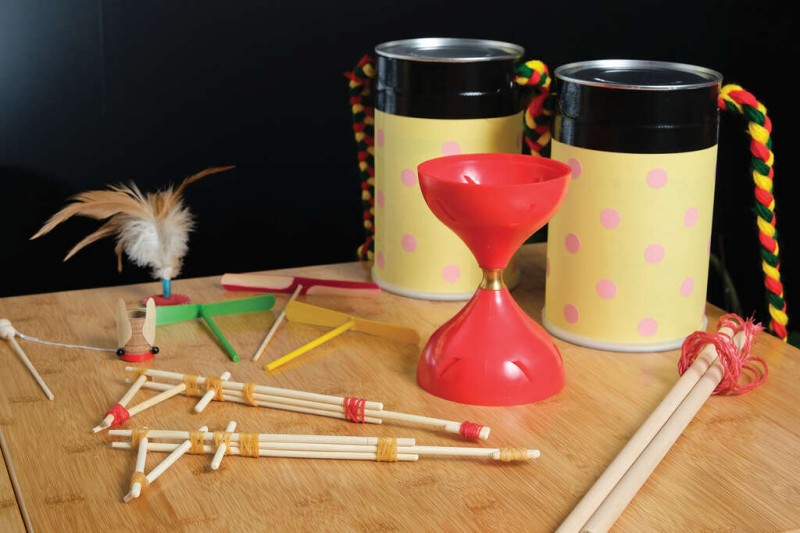
In an age where toys are either prefabricated from colorful modern materials and tend to be imported, or have been replaced completely with video games, these traditional toys are usually no longer Taiwanese children’s first choice, but the stories they tell about Taiwan’s history hold great cultural relevance. While some, such as the kendama (a type of cup-and-ball toy), came to Taiwan via Japan during the colonial period, others came from China, such as the diabolo. “Battle cards,” called pogs in the US, probably arrived in Taiwan via connections between Taiwanese and the Asian diaspora in Hawaii, where they originated in the 1920s. Still others are simple to construct and made from readily available materials, natural in a time when Taiwan was still an agricultural nation.
These stories weave together to tell the story of a unique Taiwanese culture influenced by its neighbors as well as cultural connections to Asian communities around the world.
BAMBOO GUNS
These are not so much a toy you can buy in shops as something children might create themselves. They’re still popular as DIY projects for youngsters, often using rubber bands and disposable chopsticks, creating a rubber band gun that allows you to have harmless fun snapping rubber band projectiles at friends or siblings, without risking a snap to your own finger. The “guns” children might make for this purpose range from simple projectile launchers to complex, crossbow-like weapons, for more mechanically-inclined children. The basic form is simple: you need a barrel (usually two to four chopsticks, with some space between them), a handle (more chopsticks), a moveable launcher (a smaller piece of wood or bamboo, which fits in the space created by the barrel) and something to string the rubber band on at the end. (Read more: Taipei Summer Hotspots: Beat the Heat This Summer with These Five Family-Friendly Outdoor Destinations)
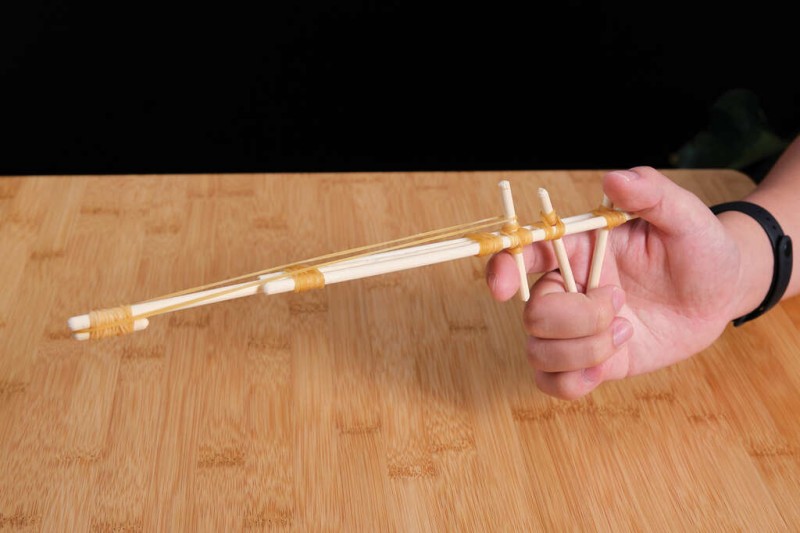
STILTS
This is one traditional toy you’re not as likely to find at a shop, but stilts have been around for a long time in Taiwan. Stilts are usually made of wood or bamboo and can run from very short — these are toys you might buy for a child to play with — to several meters high, for professionals only. Very short, fat ones (for younger children) are now often made of plastic. If one gets to be very good at stilt-walking, it’s possible to do this professionally. Many temple festivals in Taiwan feature stilt-walking acrobatic troupes who perform in a variety of styles, or other types of performers, such as groups of Eight Generals (bajiajiang, 八家將) or lion dancers who might do performances on stilts.
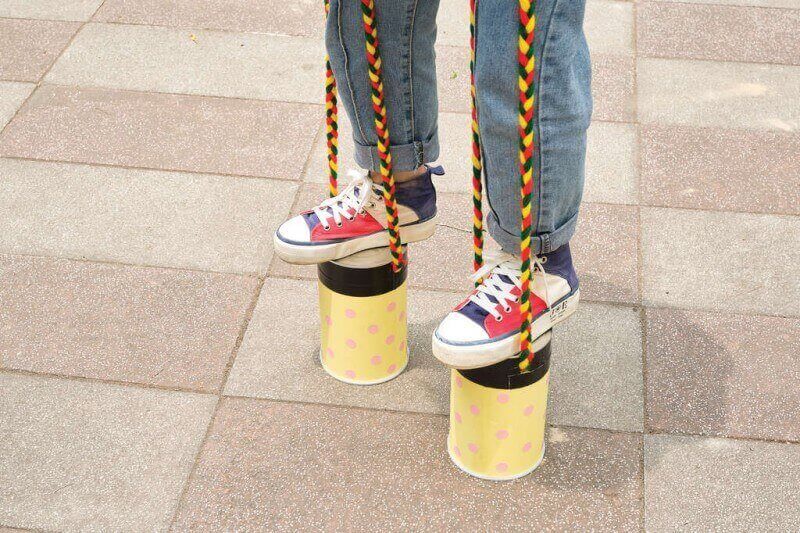
BAMBOO COPTERS (BAMBOO DRAGONFLIES)
Some of the most traditional toys not only have agrarian connotations — a bamboo copter can be made entirely from natural materials — but are even named after animals. The bamboo dragonfly is a simple toy made of a twisted bamboo propeller (which may be burnt a bit at the center to make it more pliant) attached to a stick of bamboo or wood. The finished product resembles a dragonfly. Rotated by sliding one’s palms against each other, the dragonfly shoots into the air. Another version of the toy involves wrapping a string around the shaft, drawing it through a hole drilled in a small container, and pulling quickly. Bamboo copters were originally from China before making their way to Taiwan. In fact, Jin Dynasty (晉朝) Chinese philosopher Ge Hong (葛洪) mentioned the string-pulled type of this toy in his 4th century writings. (Read also: Glamping for Kids in the Heart of Taipei)
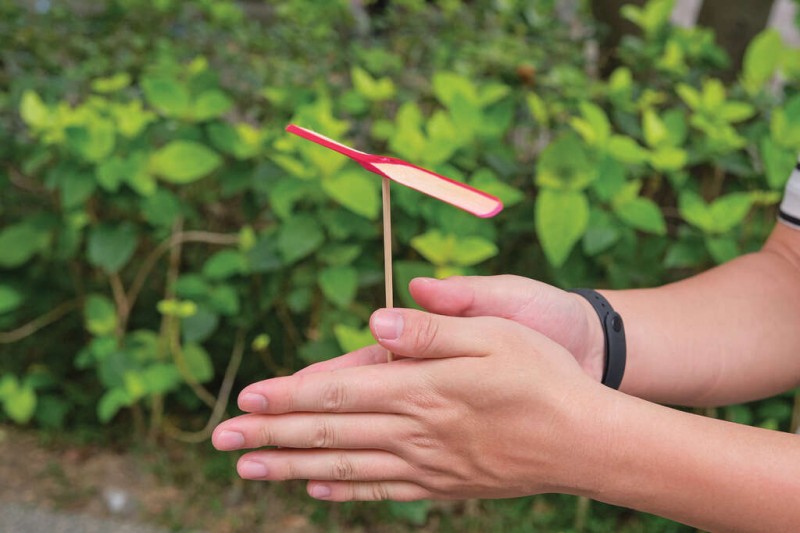
SHUTTLECOCK KICKING (JIANZI)
Unlike the shuttlecocks used in badminton, these are feathers attached to a flatbottom, which is usually made of rubber in modern times. The game is similar to hacky-sack in the West: the goal is to keep the shuttlecock in the air using any part of the body except the hands. Popular in China for centuries — it may be related to cuju (蹴鞠), game played during the Han dynasty (漢朝) — modern shuttlecock kicking can be done alone or with friends. It can also be played competitively, often with a net (although shuttlecock games without nets exist). Similar games, often using a ball, are popular across Asia, including sepak takraw in Thailand, jegichagi in Korea, larong sipa in the Philippines and kebane in Japan.
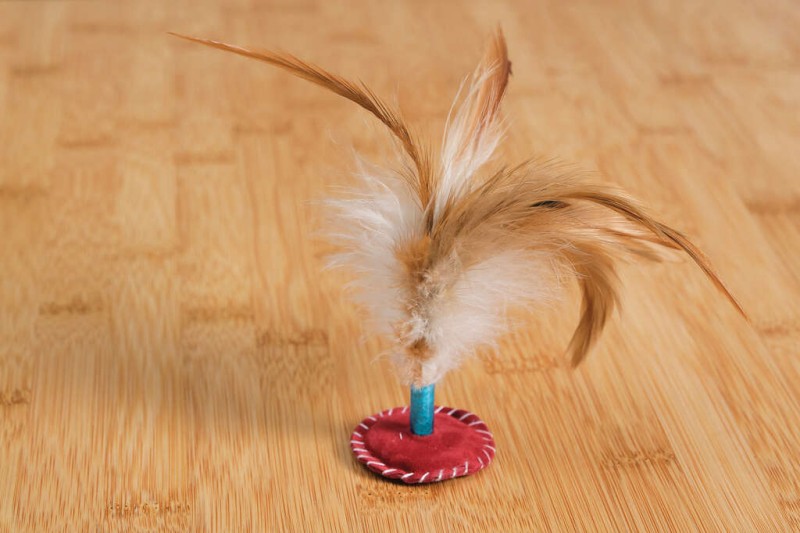
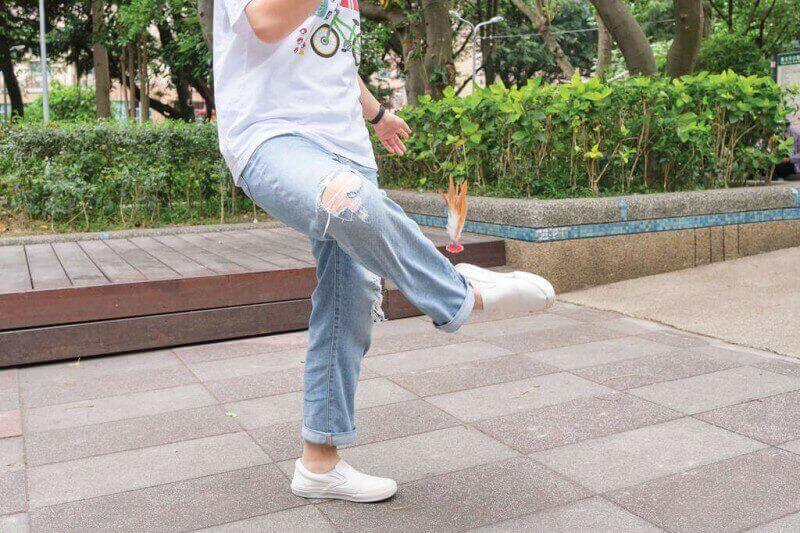
BAMBOO CICADAS
While many of the toys above came to Taiwan via China, the bamboo cicada seems to be uniquely Taiwanese. The materials — bamboo, wood, paper, string and rosin (a natural sap resin) — are also naturally abundant here, and fairly easy to obtain in rural communities. This may be why the toy was once so popular among Taiwanese children. To make one, a slice of bamboo, often decorated to look like a cicada, is covered with paper at one end, through which a knotted string is pulled. The string is wound around a stick, often between two bulbs carved at the end for this purpose, with rosin applied to the groove between them. When the bamboo slice is whipped around on the string, the friction between the string and the rosin creates a sound quite similar to Taiwan’s summer cicadas. (Read more: Exploring Museums with Kids in Taipei)
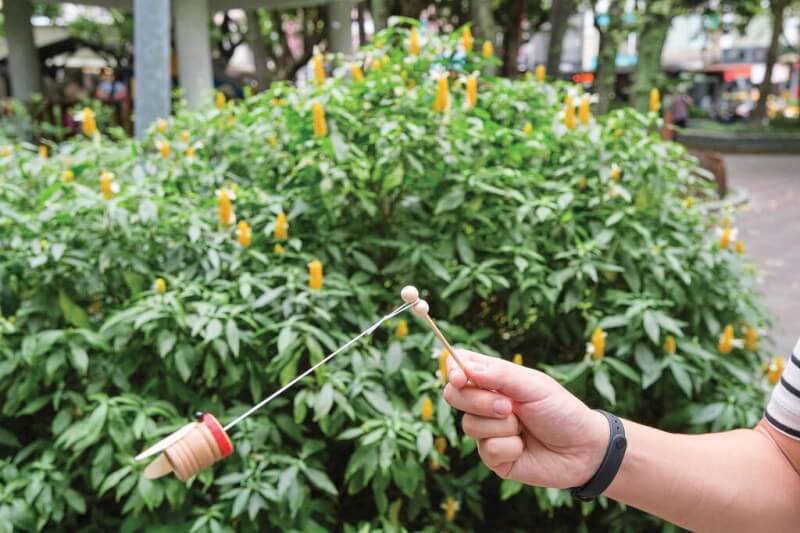
DIABOLO
This is another toy that made its way to Taiwan from China, where it has been popular since at least the Tang Dynasty (唐朝). Like the bamboo copter, modern colorful plastic versions exist. In this case, however, the traditional and the modern diverge noticeably. An old-style Chinese yo-yo has a long axle with two wooden, barbell ends, which cause a droning cicada-like sound. Hence the toy’s various names: kongzhu (空竹, air bamboo), kongzhong (空鐘, air bell), or most commonly in Taiwan, cheling (扯鈴, pull-bell). By contrast, a newer style of yo-yo, called the diabolo, has a shorter axle and the ends are hourglass-shaped cups, and is popular with circus and party trick professionals. Though the diabolo offers better manipulation for easier tricks, the quintessential “whistling bell” sound is lost.
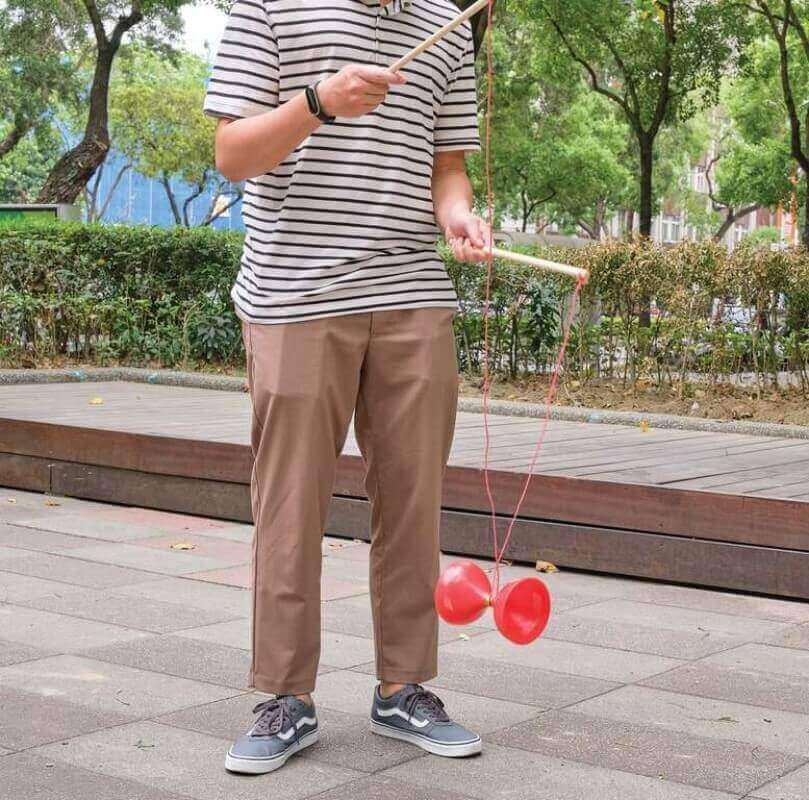
🔫MAKE YOUR OWN BAMBOO GUN!🔫
YOU WILL NEED:
• A sharp, boxcutter-style razor
• Four to five sets of disposable wooden chopsticks (you may want extra on hand)
• A large supply of rubber bands
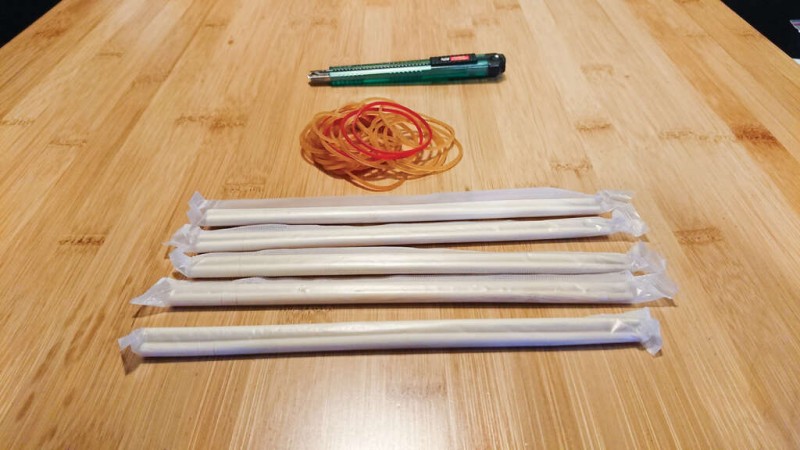
EASY STEPS
❶ Place three chopsticks in a row. Pull the middle one halfway back, so it creates a chopstick-size space between the other two. Fasten all three together with rubber bands in at least two places. The middle chopstick should have the fat end facing out (in the direction you will shoot).
❷ Cut a new chopstick in half, and place the pieces together at an angle (with a bit of overlap at the bottom). They’ll look like a triangle with one side missing. Cinch them together with a rubber band.
Place these in the space between the two chopsticks in your barrel (towards the back, where the handle of a gun would be — leave space for the launcher near the front). Secure these on each side with more rubber bands to the barrel.
❸ Cut one third of a chopstick for your launcher. Place this in the space in the barrel, in front of your handle. Secure with a rubber band, but not as tightly. Make sure it can be moved when you pull the bottom (your “trigger”).
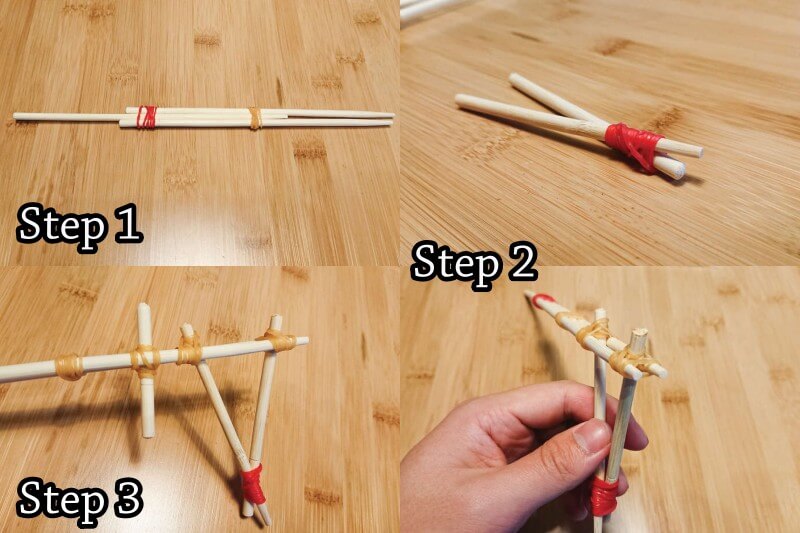
❹ Cut a small piece of a chopstick, and secure very tightly with a rubber band to the end of the barrel (the middle chopstick you pulled out). This should go below the long “barrel” chopstick.
❺ Arm your gun by stringing a rubber band between the barrel and the small end-piece, to hold it in place. Put the other end over the top part of your launcher, which should be pulled back.
❻ Hold the handle and pull the “trigger” part of the launcher. Your rubber band is on its way to your target!
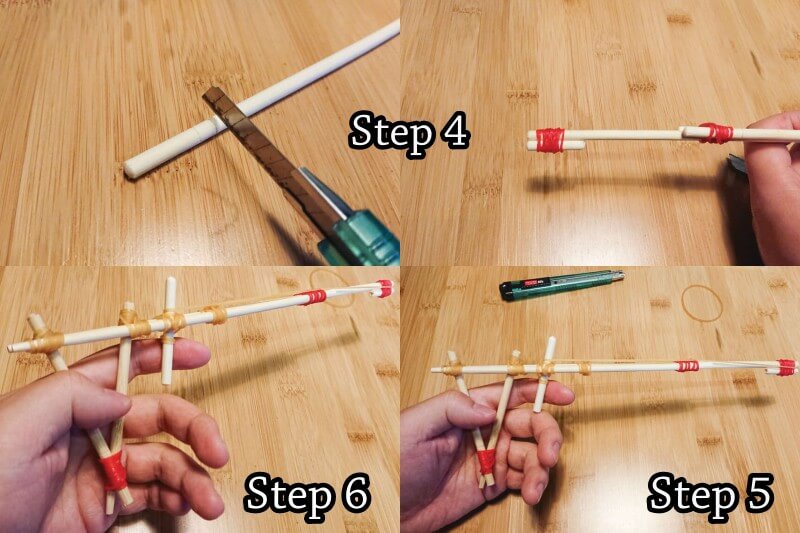
This article is reproduced under the permission of TAIPEI. Original content can be found at the website of Taipei Travel Net (www.travel.taipei/en).













Comments are closed.